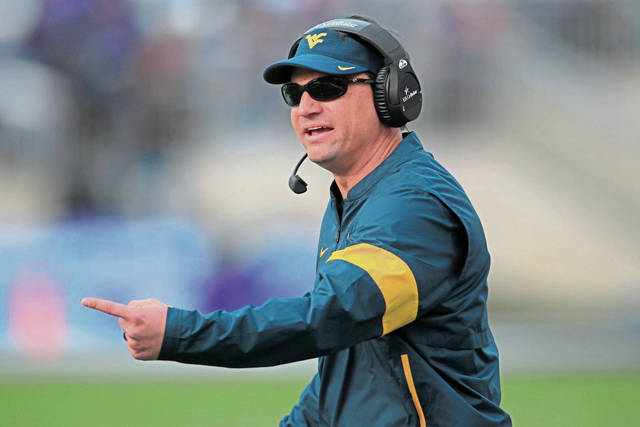West Virginia coach Neal Brown deals with lost practice time, uncertainty
Spring practice meant a bit more at West Virginia this year than at many places across college football.
The 15 days of meetings, drills and teaching would have laid the foundation for coach Neal Brown’s second season. It was time to set aside 2019 — when the Mountaineers finished 5-7 (3-6 in the Big 12) and scored the fewest points (247) in the conference — and look with hope toward a new season.
But covid-19 intervened, postponing or canceling all athletic activity across the nation after two days of WVU’s spring drills.
“It’s unfortunate that we’re missing this spring,” Brown said. “I just thought this offseason and this spring practice were going to be critical.”
Now, Brown has nothing but video from two days of workouts — without pads — and plenty of uncertainty as the national coronavirus shutdown continues.
When will Brown and other coaches around the country be allowed to conduct practice again?
“I think we need to do something,” Brown said.
But he said increasing the number of days for August training camp might not be a good idea.
“I don’t think that’s the most positive thing for our players,” he said.
It was suggested to Brown during his conference call with reporters Thursday that, if the effects of the coronavirus start to subside, perhaps the NCAA would loosen its rules and allow NFL-style organized team activities (OTAs) this summer.
Brown proposed allowing teams the 15 workouts they would have had this spring, minus the number held before the shutdown. West Virginia had two, Pitt three and Penn State zero.
“You have to limit it from a time standpoint,” Brown said. “There are a lot of logistics on how you have to work through that to make that a reality, but I think all things are on the table right now.”
Brown knows most of his players are home, “safe and fed,” he said.
But what about staying in proper football shape?
The WVU strength staff gave players suggested workouts, but how diligent will they be without supervision?
“We don’t have the ability to track it,” Brown said. “It’s our hope that they’re doing something. We can’t mandate it.”
Brown said his staff also sent players a video, describing social distancing and its importance.
“We emphasized staying home,” he said. “You can do your best work by staying home. Who would have thought you could do your best work by doing nothing?”
Brown said the players’ age group (17-22) “has been the slowest to come to terms” with the severity of the coronavirus.
“We’ve been trying to communicate with our guys, probably from the end of February,” he said. “This week is when the severity of the situation is starting to hit home.
“In the beginning, did they understand? Probably not. Have we been perfect? Definitely not.
“Are they starting to understand the severity of it now? I do believe so.
“I think this pandemic is something that is going to affect everybody, whether you know somebody who has been diagnosed, whether you know somebody who is on the front line that’s fighting this, (whether) you’re suffering through the financial ramifications.
“I think everybody is going to be affected by it. It’s probably going to get worse before it gets better.”
During his conference call with reporters, Big 12 commissioner Bob Bowlsby suggested the situation might become so dire games could be played this fall in empty stadiums.
“I suppose it’s possible that we can return to some form of competition before we got to the point where we were comfortable with public assembly,” he said, “and we can end up with what we thought we might end up with in basketball and that is playing in front of no crowd.”
Although football matters are secondary in importance, Brown said he liked what he saw from the small sampling of practice earlier this month.
“Our skill level is much better than a year ago,” he said. “Our cohesiveness is better, and I’m not just talking about our players. Our staff, everything is more cohesive.
“There are some guys who have made some big jumps, especially Year 1 to Year 2 guys.”
He said he has seen encouraging signs among offensive linemen and wide receivers. But what does any of it mean at this point?
“You’re only in helmets, so it’s hard to tell,” he said.
But it could be worse.
“I’m glad it’s not Year 1 for us,” he said. “That’s a positive.”
Jerry DiPaola is a TribLive reporter covering Pitt athletics since 2011. A Pittsburgh native, he joined the Trib in 1993, first as a copy editor and page designer in the sports department and later as the Pittsburgh Steelers reporter from 1994-2004. He can be reached at jdipaola@triblive.com.
Remove the ads from your TribLIVE reading experience but still support the journalists who create the content with TribLIVE Ad-Free.

